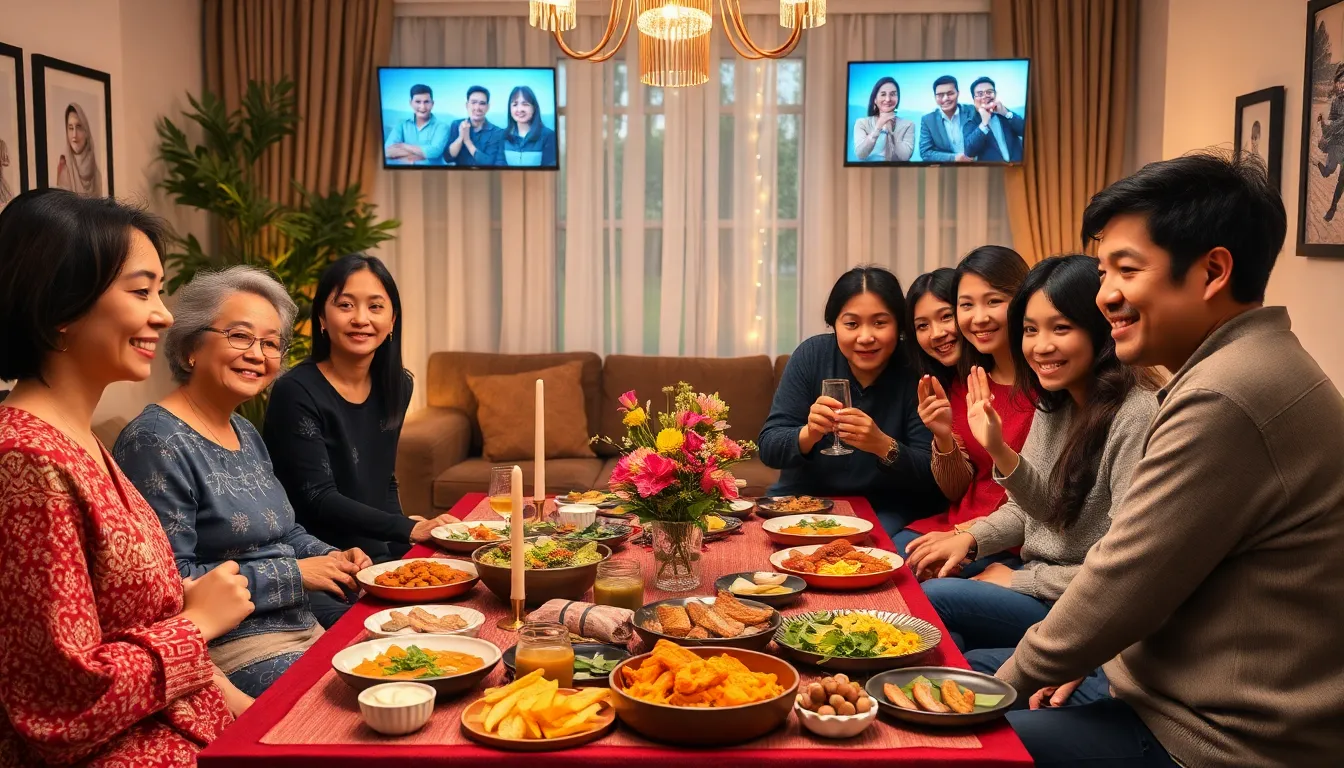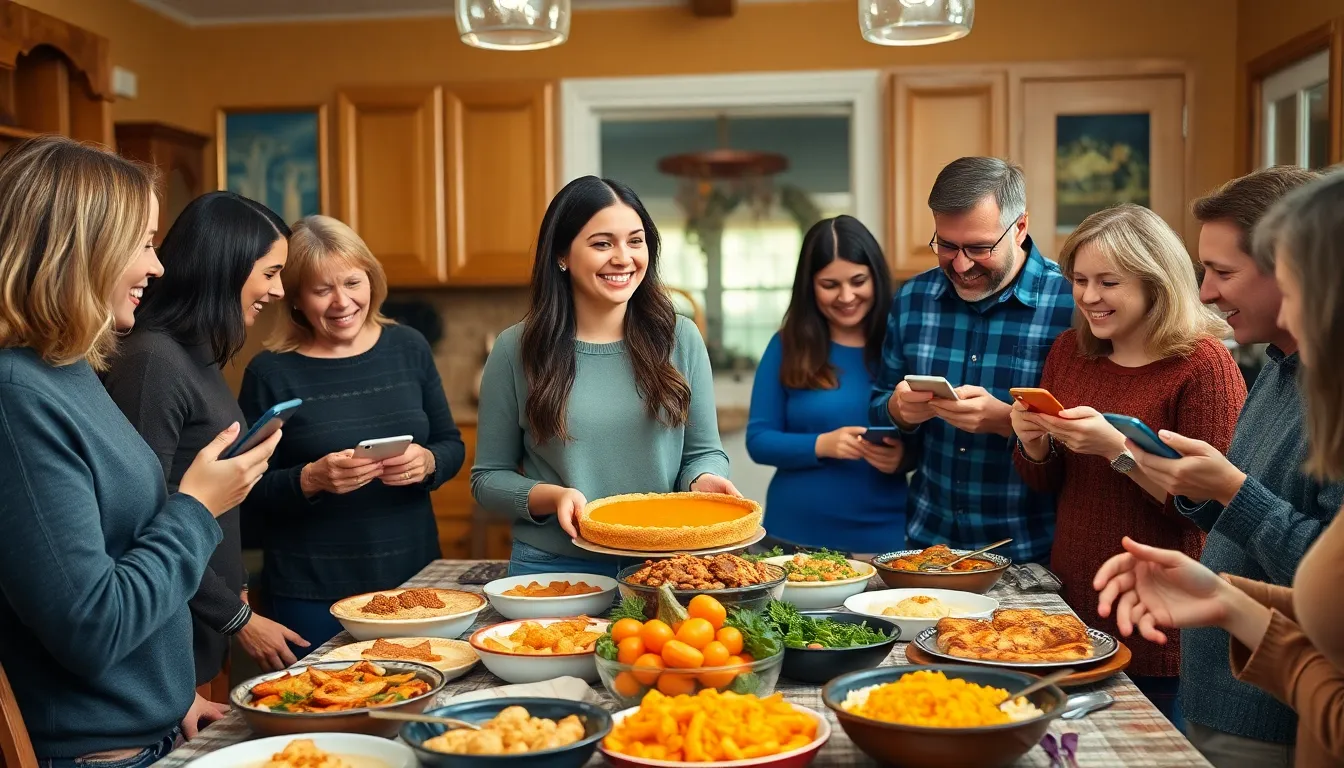Traditions might feel like grandma’s secret recipe—old, cherished, and sometimes a little dusty. Yet, in today’s fast-paced world, they’re getting a makeover. Picture this: a family gathering where everyone’s glued to their phones, but they still manage to argue over who makes the best pumpkin pie. It’s a delightful clash of the old and the new, and it’s happening everywhere.
Table of Contents
ToggleOverview of Traditions in Modern Times
Traditions in modern times reflect a blend of established customs and contemporary influences. Family gatherings still occur, yet technology often interrupts, as people check their phones during meals. Engaging in debates about favorite recipes, such as who makes the best pumpkin pie, remains popular. This conversation illustrates how traditional discussions persist despite digital distractions.
Adaptations occur across various cultures, allowing for innovative practices that honor heritage. For example, some families now incorporate virtual elements, connecting across distances through video calls during celebrations. Shared moments may also include online games, enhancing the experience for everyone involved.
Regaining interest in traditions motivates many individuals. Modern potlucks, where households bring dishes that blend traditional recipes with contemporary flavors, encourage culinary creativity. Certain customs may evolve, yet their roots remain visible, preserving cultural identity alongside modernization.
Communities continue to celebrate annual festivals, showcasing historical practices while embracing current societal themes. Art displays, music performances, and food markets highlight both local traditions and popular trends. Emphasis on sustainability in gatherings further modernizes these events, with many opting for eco-friendly materials and locally sourced foods.
Traditions provide a framework that adapts to new cultural landscapes. They can connect generations while allowing for individual expression. Observing changes in these practices offers insight into the evolving identity of societies today.
The Evolution of Traditions

Traditions continually adapt in response to societal changes. They’re influenced by various factors, including technological advancements and shifting cultural values.
Historical Context
Celebrations once revolved around agricultural cycles, religious events, or communal milestones. Societies depended on consistent rituals that fostered unity and cultural identity. In the past, oral storytelling preserved history, allowing families to pass down customs across generations. Festivals served as communal gatherings, reinforcing collective memory and providing a sense of belonging. Historical events shaped these practices, creating unique regional customs that reflected local cultures. Understanding this context enhances appreciation for how modern interpretations emerged from these longstanding roots.
Modern Adaptations
Today’s traditions reflect a blend of historical practices and contemporary influences. Families incorporate technology during gatherings, allowing remote participation through video calls. Virtual celebrations became common, particularly during the pandemic, demonstrating adaptability and resilience. Culinary trends encourage innovative twists on classic recipes, such as plant-based substitutes for traditional dishes. Annual events now emphasize diversity and inclusivity, showcasing various cultural backgrounds. Sustainability impacts gathering practices, with many opting for eco-friendly solutions that respect heritage while addressing current environmental concerns. These adaptations reveal a dynamic relationship between tradition and modernity.
The Role of Technology
Technology significantly reshapes contemporary traditions, introducing new ways to connect and celebrate.
Communication and Traditions
Modern communication tools transform how families maintain traditions. Video calls enable distant relatives to attend gatherings, fostering inclusion in rituals like holidays or birthdays. Social media platforms showcase virtual family events, allowing participants to share experiences in real-time. Messaging apps play a crucial role in coordinating plans, ensuring everyone remains informed and engaged. These advancements blend established customs with new methods, reinforcing connections across generations. Proponents of these technological influences emphasize the importance of preserving heritage while adopting fresh forms of interaction.
Digital Celebrations
Digital celebrations highlight adaptability during challenging times, particularly during the pandemic. Virtual festivities have become commonplace, enabling people to gather online rather than in-person. Streaming services allow friends and family to partake in events like weddings or graduations despite geographical barriers. Creative online events, such as virtual potlucks, encourage participants to join from their kitchens. Engaging in heartfelt moments through video conferencing maintains a sense of togetherness and joy. As technology continues to evolve, digital celebrations will likely play a vital role in future traditions, preserving memories while adapting to changing social landscapes.
Cultural Differences in Traditions
Cultural differences significantly shape traditions across the globe. People celebrate various events and rituals, each reflecting their unique heritage and values.
Global Traditions
Global traditions encompass practices celebrated in numerous countries. Common examples include New Year celebrations, Diwali in India, and Christmas worldwide. Each occasion showcases distinct customs, such as festive foods, specific decorations, and traditional music. These events foster connections among individuals, even when the underlying reasons differ. Many communities adapt global holidays to their local context, ensuring relevance amid changing times. Virtual participation in global traditions has increased, allowing a broader audience to engage in festivities.
Local Variations
Local variations add richness and diversity to traditions. Many regions incorporate unique customs into widely recognized celebrations, enhancing cultural identity. For instance, Mardi Gras in New Orleans blends French, Spanish, and African influences, while Carnival in Brazil focuses on vibrant parades and samba music. Local specialties like regional dishes and distinct attire often become central elements of these celebrations. Emphasizing local heritage, communities take pride in these variations, preserving history while adapting to modern influences. Integrating local flair into broader traditions enhances their significance and fosters community bonds.
Impact of Globalization
Globalization influences traditions significantly, driving cultural exchange and preservation practices worldwide.
Cultural Exchange
Cultural exchange fosters a vibrant blend of traditions as people interact across borders. Festivals now celebrate unique elements from various cultures, creating shared experiences. Food remains a prime example, with dishes like sushi and tacos becoming staples in many countries. Collaborative events, such as music and art festivals, showcase diverse customs, enriching societal identities. Individuals frequently adopt and adapt traditions, crafting personal meanings while honoring their roots. This constant exchange allows for innovation in traditional practices, reflecting the interconnectedness of global societies. Cultural awareness grows through these exchanges, encouraging respect for diverse heritages.
Preservation of Traditions
Preservation of traditions occurs through conscious efforts to maintain cultural heritages. Communities often establish organizations dedicated to documenting practices and sharing knowledge. Restoration projects aim to revitalize historical sites, helping people connect with their ancestry. Events like local craft fairs highlight traditional skills, enabling artisans to pass down techniques. Educational programs in schools teach students about their cultural backgrounds, fostering appreciation for customs. Social media platforms enable wider sharing, allowing traditions to reach global audiences. As modern society evolves, people increasingly seek authentic experiences, driving the desire to preserve essential heritage elements.
Traditions in modern times embody a fascinating blend of the old and the new. As society evolves, these customs adapt to incorporate technology and diverse cultural influences. The ongoing dialogue between generations showcases the resilience of traditions while allowing for personal expression and creativity.
In this dynamic landscape, individuals can honor their heritage while embracing contemporary practices. The integration of sustainability and inclusivity further enriches celebrations, ensuring that traditions remain relevant and meaningful. As families continue to navigate this ever-changing world, the essence of tradition will likely persist, connecting people across distances and generations.




